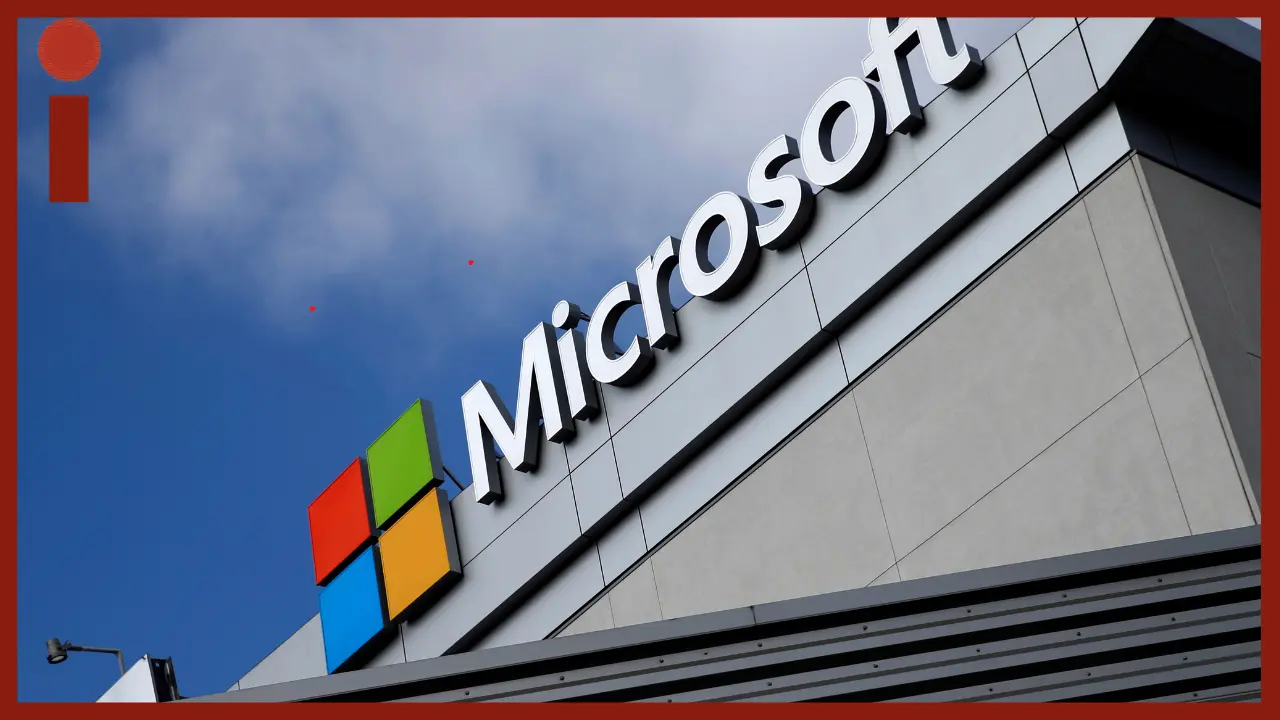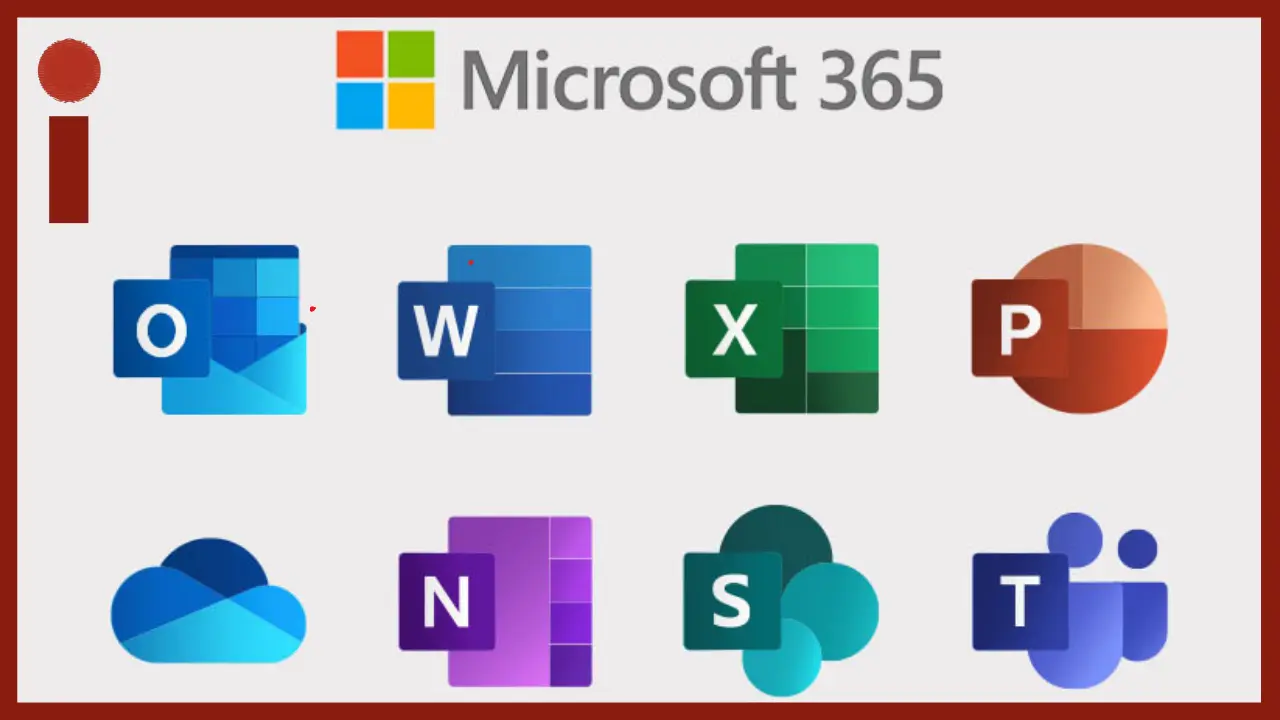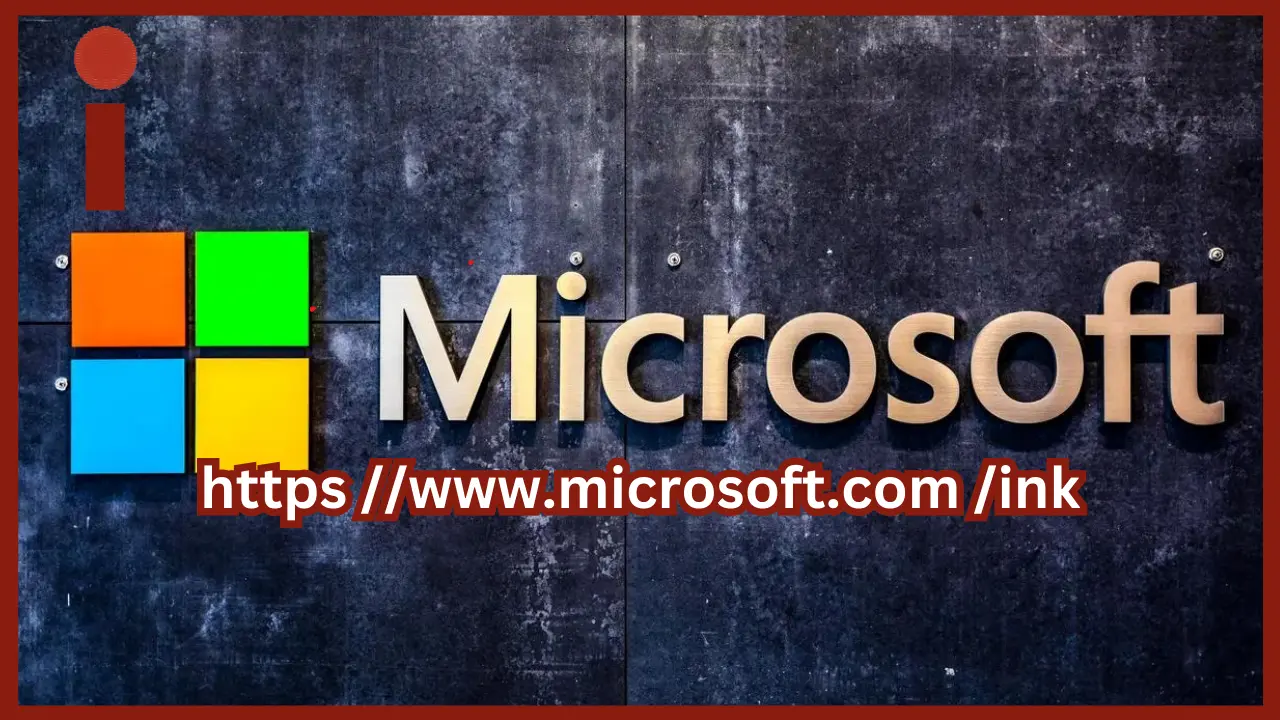In the modern digital age, where technology continues to evolve rapidly, the tools we use to stay productive and creative are also transforming. One such tool that has gained significant attention recently is Microsoft Ink, accessible via https //www.microsoft.com /ink. This digital inking solution offers a bridge between traditional pen-and-paper tasks and the digital environment, making it an indispensable tool for various users, from students to professionals and artists.
At its core, Microsoft Ink allows users to write, draw, and annotate directly on their devices using a stylus or their fingertips. What sets it apart is its seamless integration with Microsoft’s suite of applications, such as OneNote, Word, Excel, and PowerPoint. The flexibility and natural feel of inking technology help users capture ideas more fluidly, making it easier to brainstorm, take notes, and complete creative tasks with precision and ease.
Whether you are in a classroom, a corporate office, or a creative studio, Microsoft Ink enables you to work more efficiently. By turning the digital screen into a blank canvas for your ideas, it enhances both productivity and creativity, making it a versatile tool for anyone looking to optimize their workflow. In this comprehensive guide, we will explore the many facets of Microsoft Ink and how it can revolutionize the way you work and create.
What is Microsoft Ink?
Microsoft Ink is a suite of tools and technologies designed to bring the familiar experience of writing or drawing with a pen into the digital realm. Available through https //www.microsoft.com /ink, this feature allows users to interact with their devices using a stylus or even their fingers. The result is a natural, intuitive input experience that mimics the fluidity of writing or sketching on paper.
The beauty of Microsoft Ink lies in its ability to transform various forms of input into digital content. For instance, handwriting can be converted into editable text, making it easy to search and format. Similarly, rough sketches can be converted into polished graphics, perfect for presentations or design work. This level of functionality opens up new possibilities for both professionals and casual users, making it easier than ever to communicate ideas visually.
Additionally, Microsoft Ink integrates effortlessly with many of Microsoft’s most popular applications. In OneNote, users can take handwritten notes during meetings or lectures and later convert them to text. In Word and PowerPoint, ink annotations can be used to highlight important points or make quick edits during presentations. For creative professionals, applications like Adobe Photoshop also support inking, allowing for precise and detailed artwork creation.
Key Features of Microsoft Ink
One of the key aspects of Microsoft Ink is its ability to offer a wide range of features that cater to different user needs. Whether you’re using it for note-taking, design work, or simply brainstorming ideas, Microsoft Ink provides tools that make these tasks easier and more efficient.
The Ink to Text Conversion feature is one of the most powerful capabilities within Microsoft Ink. This feature allows users to write freely using a stylus, and then with just a few clicks, convert their handwritten notes into editable and searchable text. This is particularly useful for students or professionals who prefer to write by hand but need their notes in a digital format for future reference.
Another standout feature is the natural gesture editing, which makes it easy to make changes to documents without needing to rely on traditional mouse and keyboard inputs. For example, you can circle a word to select it or cross out a sentence to delete it. These intuitive gestures make editing faster and more efficient, especially during presentations or live collaborations where time is of the essence.
For creatives, the drawing and design tools available within Microsoft Ink are invaluable. These tools allow users to draw with a stylus just as they would with a pen or pencil. Artists can choose from a variety of brushes, colors, and effects to create detailed and professional-quality artwork. Paired with design software like Adobe Photoshop or CorelDRAW, the inking experience is smooth and precise, making it a favorite among graphic designers and digital artists.
Enhancing Creativity and Productivity with Microsoft Ink

One of the key reasons users turn to https //www.microsoft.com /ink is the way it enhances both creativity and productivity. The natural feel of inking technology, combined with its seamless integration into widely-used applications, makes it an excellent tool for anyone looking to improve their workflow.
In the education sector, for example, Microsoft Ink has become a favorite tool among students and teachers alike. With the rise of digital learning platforms, the ability to take notes, annotate PDFs, and draw diagrams directly on a tablet or laptop has become more important than ever. OneNote is a prime example of how Microsoft Ink can be used to enhance the learning experience, allowing students to organize their notes, create study materials, and collaborate with classmates in real time. Teachers can also use inking tools to mark assignments, provide feedback, and create interactive lessons, helping to engage students in new and innovative ways.
In professional environments, Microsoft Ink is often used to streamline workflows and improve collaboration. For instance, when working on a project in Word or Excel, a user can quickly mark up documents with a stylus, make edits, or highlight key points in meetings. This can be particularly helpful in industries like engineering, architecture, or project management, where precise drawings and annotations are often required. The ability to sign documents digitally is another feature that adds convenience, eliminating the need for printed paperwork and allowing for faster turnaround times.
Creative professionals, such as designers, illustrators, and artists, also benefit greatly from Microsoft Ink. The drawing and sketching tools available within the platform allow for a natural, responsive input that feels just like working with traditional media. Apps like Sketchpad and Photoshop take full advantage of Microsoft Ink, providing customizable pen settings and advanced features like pressure sensitivity, which are essential for detailed and intricate designs. Whether you’re creating a simple sketch or a complex piece of digital artwork, Microsoft Ink ensures that you have the tools you need to bring your vision to life.
The Role of Windows Ink Workspace
The Windows Ink Workspace is an essential feature of https //www.microsoft.com /ink, providing users with a dedicated space to access inking applications and tools. This workspace acts as a hub for users who rely heavily on stylus input, offering a range of features that are designed to make working with ink as intuitive and efficient as possible.
One of the most popular features within the Windows Ink Workspace is Sketchpad. This simple, yet powerful application provides users with a blank canvas where they can freely draw, sketch, and write. Whether you’re brainstorming ideas or working on a more detailed drawing, Sketchpad offers a range of tools, including different brush types, colors, and pen sizes, allowing users to customize their inking experience. It’s perfect for quick sketches or note-taking during meetings or classes.
Another highly useful tool is Screen Sketch, which allows users to capture screenshots and annotate them directly with ink. This is incredibly useful for creating tutorials, providing feedback, or simply marking up a document or image for future reference. With the ability to save and share these annotations, users can easily collaborate on projects and communicate ideas more effectively.
For those who love using sticky notes to keep track of their ideas, the Sticky Notes app within Windows Ink Workspace offers a digital alternative. These notes can be color-coded, resized, and even synced across devices, ensuring that important information is always at your fingertips. With the bonus of handwriting recognition, users can jot down quick notes with a stylus and have them converted into text for easy organization and retrieval.
How to Use Microsoft Ink for Collaboration
In today’s world, collaboration is key to success, and https //www.microsoft.com /ink provides numerous features that facilitate teamwork and real-time communication. Microsoft Ink is integrated into many of Microsoft’s collaboration tools, making it easier for teams to work together on projects, whether they’re in the same room or spread across different locations.
One of the best tools for collaboration using Microsoft Ink is Microsoft Whiteboard. This application provides users with a shared digital canvas where they can draw, write, and brainstorm together in real time. Whether you’re in a brainstorming session or a design meeting, Microsoft Whiteboard allows multiple users to contribute to the same board, with everyone able to see and interact with the content as it’s being created. This level of real-time collaboration is particularly useful for remote teams, allowing for a more dynamic and interactive way to communicate ideas.
Similarly, OneNote for Teams is another powerful tool for collaboration. By integrating Microsoft Ink into OneNote, team members can take notes during meetings, annotate documents, and create shared notebooks that everyone can access. The ability to use ink for notes and sketches makes OneNote an ideal platform for capturing ideas more flexibly and creatively.
Applications and Tools Supporting Microsoft Ink

https //www.microsoft.com /ink offers seamless integration with a wide array of applications, making it accessible to users from various fields such as education, business, and design. The extensive compatibility of Microsoft Ink with different tools allows users to maximize its functionality across multiple tasks.
For professionals who frequently work with presentations and documents, Microsoft PowerPoint and Word offer robust inking features. In PowerPoint, you can easily annotate slides during live presentations, highlight key points, or make real-time edits that your audience can see. This is particularly useful for educators or trainers who want to make their presentations more interactive by writing directly on the slides. Similarly, Word allows users to use ink for markup, making it easy to edit or comment on documents in a more personalized and visual way. For those working on design-heavy documents, the ability to sketch or highlight directly on the text improves clarity and ease of communication.
For artists and designers, Adobe Photoshop and other drawing software provide full support for Microsoft Ink. The integration allows artists to take advantage of precision inking tools like pressure sensitivity and custom brushes, which replicate the experience of working with traditional media. This is crucial for creating high-quality digital art, illustrations, or designs. The natural feel of inking technology, paired with the advanced capabilities of design software, helps streamline the creative process for artists, illustrators, and graphic designers alike.
Students and educators, on the other hand, will find Microsoft OneNote and Class Notebook incredibly useful. On these platforms, users can take handwritten notes, annotate PDFs, and create diagrams, all using digital ink. The ability to convert ink to text in OneNote makes it easier to search and organize notes, making it an excellent tool for students who prefer writing by hand. Teachers can use OneNote Class Notebook to provide feedback on assignments, give lessons with digital inking, and enhance student engagement by making learning more interactive.
With such a wide range of tools supporting Microsoft Ink, users can integrate digital inking into almost any aspect of their workflow, whether it’s creating artwork, managing projects, or teaching a class.
Accessibility Features in Microsoft Ink
An often overlooked aspect of Microsoft Ink is its contribution to accessibility. Microsoft has taken great care to ensure that this tool is not just for tech-savvy users, but for everyone, including individuals with disabilities. The flexibility of digital inking helps break down barriers, allowing people with different abilities to interact with technology in ways that suit them best.
For users with motor impairments, using a stylus with https //www.microsoft.com /ink can be a more comfortable and natural way to interact with their devices than typing on a keyboard. Microsoft Ink supports a variety of input devices, including styluses that are designed for people with reduced dexterity, making it easier for them to write or draw on their screen.
Additionally, for users with learning disabilities such as dyslexia, handwriting recognition, and ink-to-text conversion in Microsoft OneNote allow them to write in their handwriting and have it instantly converted to searchable text. This can make it much easier for them to organize their notes and find the information they need without having to rely solely on typed input.
Narrator and Immersive Reader, which are both part of Microsoft’s suite of accessibility tools, can also be integrated with Microsoft Ink. These features help users by reading aloud text and handwritten notes, improving comprehension for individuals who have visual impairments or other reading difficulties.
In addition to improving accessibility, these features make Microsoft Ink a more inclusive tool, ensuring that everyone can benefit from its capabilities.
The Future of Microsoft Ink: What’s Next?
The future of Microsoft Ink, available through https //www.microsoft.com /ink, looks promising, as Microsoft continues to invest in improving and expanding its digital inking capabilities. Emerging technologies like artificial intelligence (AI) and machine learning are likely to play a significant role in the evolution of digital inking, offering even more advanced features for users.
One area of development is the integration of AI-powered handwriting recognition. While Microsoft Ink already offers impressive handwriting-to-text conversion, future iterations could potentially make this process even more accurate and intuitive. AI could learn a user’s unique handwriting style over time, ensuring better accuracy in text conversion and reducing the likelihood of errors. This would be particularly beneficial for professionals and students who rely on handwritten notes but need them in a digital format for further processing.
Another exciting possibility is the introduction of 3D inking technology. As virtual and augmented reality become more mainstream, the potential for creating 3D ink objects that can be manipulated in a virtual space could open up new avenues for creativity and productivity. This would be especially useful in fields like architecture, engineering, and industrial design, where precise 3D models are essential.
Furthermore, the continued enhancement of collaboration tools could make real-time inking even more interactive. Future versions of Microsoft Whiteboard or other collaboration apps may allow users to contribute simultaneously in more sophisticated ways, incorporating ink into 3D spaces or using AI to suggest improvements and ideas during brainstorming sessions.
As Microsoft continues to innovate, it is clear that digital inking will remain an important aspect of its ecosystem, offering new and exciting possibilities for users across various industries.
Read Also: SkillsClone.life: Your Ultimate Hub for Modern Skill Development in 2024
Conclusion
Microsoft Ink, accessible via https //www.microsoft.com /ink, is a revolutionary tool that has transformed how we interact with our devices. By bridging the gap between traditional handwriting and digital input, it offers a natural and intuitive way to express ideas, whether through note-taking, drawing, or annotating documents. With its seamless integration into a wide range of Microsoft applications and other software, Microsoft Ink provides users with a versatile tool that enhances both productivity and creativity.
The ability to collaborate in real time, take advantage of advanced design tools, and even convert handwriting to text makes Microsoft Ink an essential tool for professionals, students, and creatives alike. As technology continues to evolve, it’s clear that digital inking will play an increasingly important role in how we work, learn, and communicate. Whether you’re a student taking notes, an artist sketching a masterpiece, or a team collaborating on a project, Microsoft Ink empowers you to achieve more with ease and efficiency.
By incorporating Microsoft Ink into your workflow, you can unlock new levels of productivity and creativity, making it a tool that truly enhances your digital experience.


